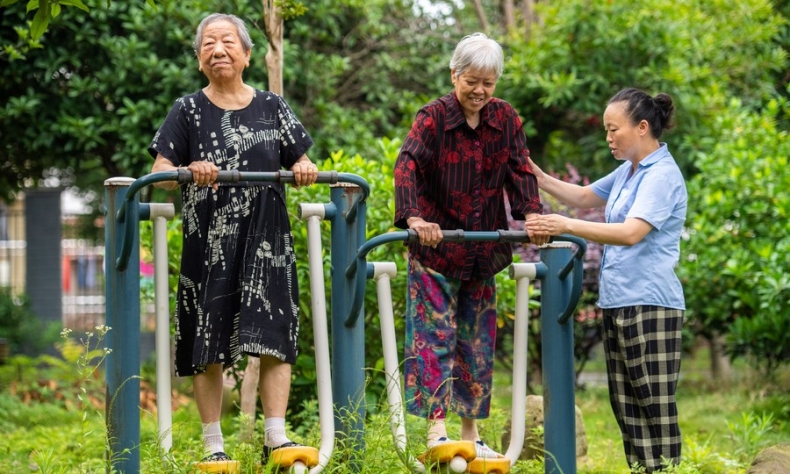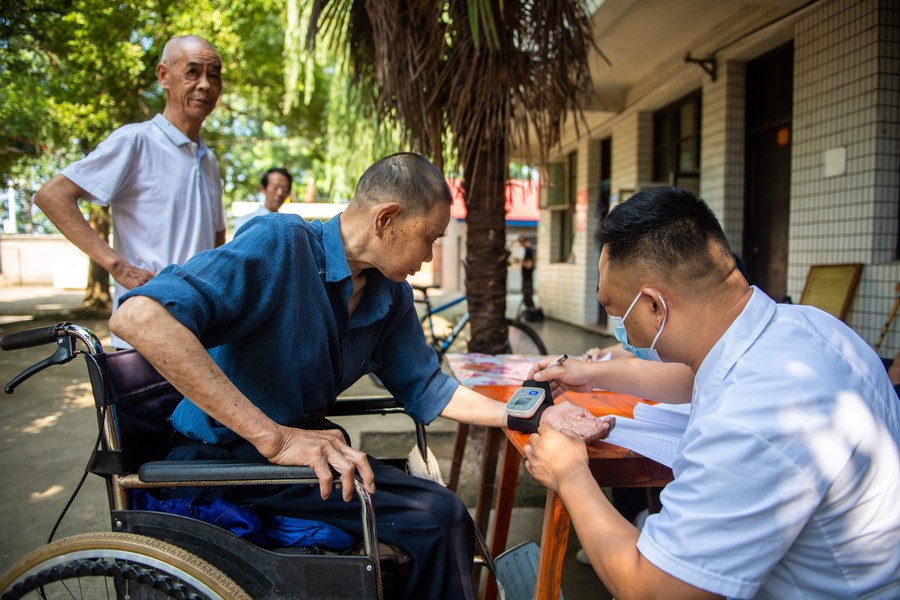There’s Gold in the Silver Economy

The growth of this older demographic, as well as China’s growing middle class, is creating increasing demand for products and services related to aging, health and independent living.
China’s rapidly aging population has the potential to create big challenges in the decades to come. As hundreds of millions of people reach retirement age in the next few years, the government is placing increasing focus on aging-related issues. Identifying and mitigating the challenges on the horizon are creating not only opportunities to better meet the needs of older people, but also new drivers for the nation’s economy.
This year’s first State Council Executive Meeting, a regular meeting of China’s highest state administrative organ, held on January 5, focused on nurturing what has become known as the silver-haired economy and improving the wellbeing of the country’s senior citizens. The term encompasses all economic activities, products and services that aim to meet the needs of older people.
At a time when China’s economic priorities are numerous, the silver economy stands out as a priority for action due to the immediacy of the demographic shift. Data released by the Ministry of Civil Affairs show 19.8 percent of the population, or 280 million people, were aged 60 or above at the end of 2022. Those 65 or over were 14.9 percent of the population, or 210 million. The number of people aged 60 and above is expected to exceed 400 million by around 2035, and will then account for over 30 percent of the population, according to the National Health Commission.
The growth of this older demographic, as well as China’s growing middle class, is creating increasing demand for products and services related to aging, health and independent living. In previous generations, much of the assistance provided to older people came from family members, meaning today’s aged-care industry is still in its infancy. The consequent short supply and variable quality of the services on offer mean there’s huge potential for growth. This potential has helped break the mindset that the aging population will be a burden on the economy and on society. Instead, it is anticipated that increased consumption by this sector will be a driver of high-quality growth.

The Chinese Government has incorporated the strategy of healthy aging into its current five-year plan (2021-25) as well as longer-term planning. This month’s meeting of the State Council provided new guidance on how to implement this strategy through three main agenda points. First, it emphasized the government’s responsibility for meeting the basic needs of the elderly, ensuring their welfare and increasing the supply of essential public services.
Second, it highlighted the need to use market-oriented mechanisms and leverage diverse market players and social organizations to better meet the diverse and varying degrees of aged-care needs, and promote the robust growth of the silver economy.
Third, it committed to optimizing related policies and measures, with a particular focus on addressing urgent concerns such as home-based aged care, healthcare accessibility and medication to increase older people’s quality of life.
According to a report on the development of China’s silver economy released by the Fudan Institute on Aging, the scale of the silver economy will have reached 19 trillion yuan ($2.6 trillion) by 2035, accounting for 28 percent of total consumption and making up 9.6 percent of GDP.
Currently, however, insufficient supply of senior care services is a limiting factor. It’s therefore important to encourage businesses and social organizations to become more involved in the silver economy to ensure more diverse services are available at a variety of price points. China can also borrow from other countries’ best practices, and work with international aged-care enterprises to better meet Chinese demand.
 Facebook
Facebook
 Twitter
Twitter
 Linkedin
Linkedin
 Google +
Google +










